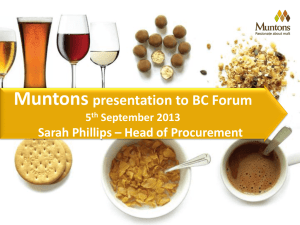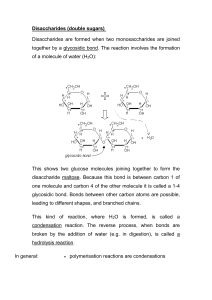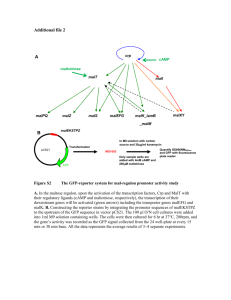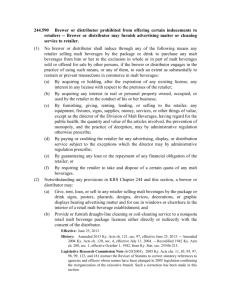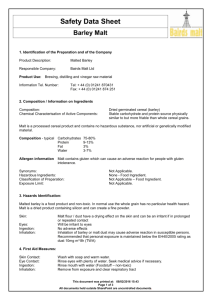Lecture 17
advertisement
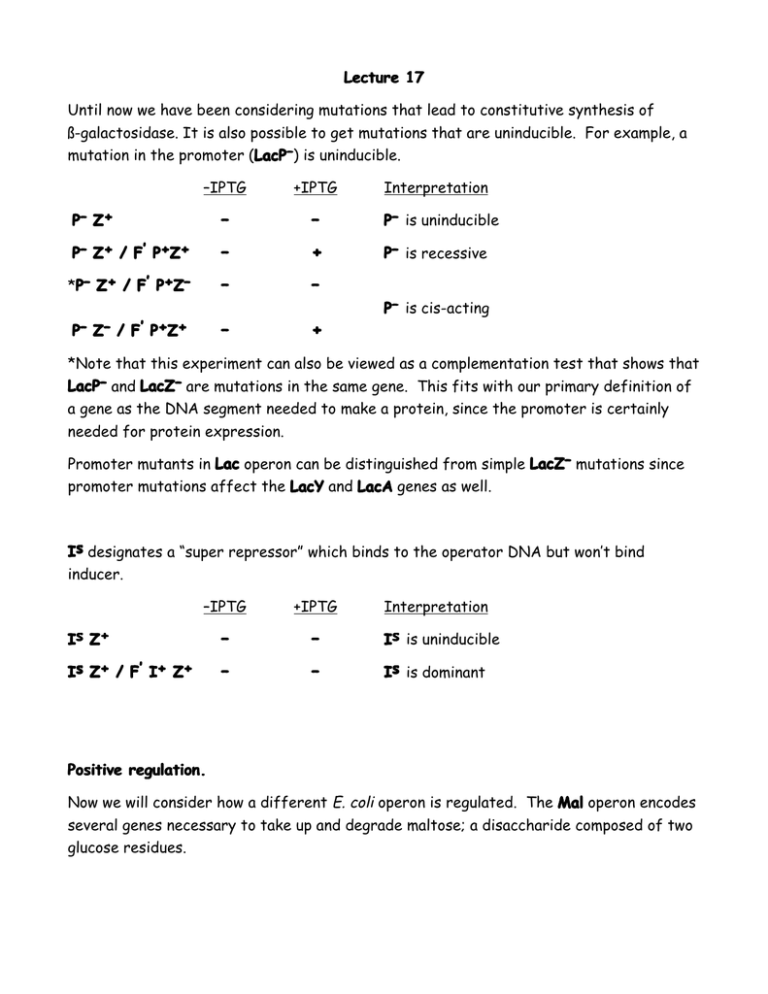
Lecture 17 17 Until now we have been considering mutations that lead to constitutive synthesis of ß-galactosidase. It is also possible to get mutations that are uninducible. For example, a LacP–) is uninducible. mutation in the promoter (LacP –IPTG +IPTG Interpretation P– Z+ – – P– is uninducible P– Z+ / F’ P+Z+ – + P– is recessive P– Z+ / F’ P+Z– *P – – P– is cis-acting P– Z– / F’ P+Z+ – + *Note that this experiment can also be viewed as a complementation test that shows that LacP– and LacZ– are mutations in the same gene. This fits with our primary definition of a gene as the DNA segment needed to make a protein, since the promoter is certainly needed for protein expression. Promoter mutants in Lac operon can be distinguished from simple LacZ– mutations since promoter mutations affect the LacY and LacA genes as well. Is designates a “super repressor” which binds to the operator DNA but won’t bind inducer. –IPTG +IPTG Interpretation Is Z + – – Is is uninducible Is Z+ / F’ I+ Z+ – – Is is dominant Positive regulation. Now we will consider how a different E. coli operon is regulated. The Mal operon encodes several genes necessary to take up and degrade maltose; a disaccharide composed of two glucose residues. maltose (glucose-glucose) maltose intracellular maltose transport proteins glucose + glucose MalQ (amylomaltase) Much like the Lac operon, the products of the Mal operon are induced when maltose is added to cells. Thus, maltose acts as an inducer. cell mass log amount MalQ + maltose time When mutants that affect the regulation of the Mal operon were isolated, the most MalT. We can apply common type consisted of uninducible mutations in a gene known as MalT dominance tests and cis-trans tests to MalT mutations with the following results: maltase activity –maltose +maltose Interpretation Mal+ – + Maltose induces Mal operon MalT– – – MalT– is uninducible MalT– / F’ MalT+ – + MalT– is recessive MalT– MalQ+ / F’ MalT+ MalQ– – + MalT– MalQ– / F’ MalT+ MalQ+ – + MalT is trans-acting From this table it looks as if the MalT– trait is not expressed either in cis or in trans. Because MalT– is recessive, it makes more sense to consider the properties of the dominant MalT+ allele in the cis/trans test. Viewed in this way, the MalT+ trait is expressed in both cis and trans and therefore MalT is considered to be trans-acting. This behavior is different from any of the Lac mutations that we have discussed. The interpretation is that MalT encodes a diffusible gene product (not a site on DNA) that is required for activation of transcription of the Mal operon. This type of gene is usually called an activator. As shown in the diagram below, maltose binds to the MalT activator protein causing a conformational change in MalT allowing it to bind near to the promoter and to stimulate transcription. Note that the genes required for maltose uptake are located in an operon elsewhere on the chromosome, but these genes are also regulated by MalT MalT. activator protein The Mal Operon maltodextrin phosphorylase RNA polymerase MalT P initiator promoter MalP amylomaltase MalQ + inducer (maltose) This model requires a site, called the initiator, which is where the activator binds near the promoter to activate transcription. If you think about how mutations in an initiator site should behave in dominance and cis/trans tests, you will see why in practice it is difficult to distinguish initiator site mutations from promoter mutations. It is also possible to isolate “super activator” mutants that will bind to the initiator site and activate transcription regardless of whether the inducer maltose is present. Such alleles of the MalT gene are called MalTc and their properties are given below. –maltose +maltose Interpretation MalTc + + MalTc is constitutive MalTc / F’ MalT+ + + MalTc is dominant MalTc MalQ+ / F’MalT+ MalQ– + + MalTc MalQ– / F’MalT+ MalQ+ + + MalTc is trans-acting d mutants that For a multimeric activator it should also be possible to isolate activator-d d will interfere with the binding of wild-type subunits to the initiator site. Actually MalT-d mutants have not been isolated, probably because MalT is a monomer.
